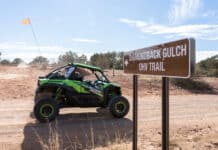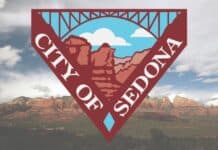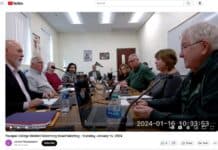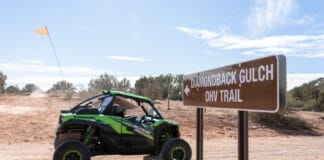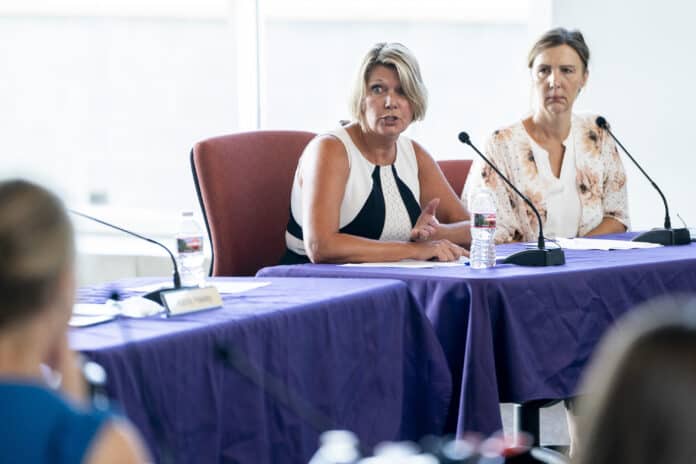
The Sedona-Oak Creek School District Governing Board unanimously voted to authorize English language development courses to be classified as English language arts credits for fulfilling graduation requirements at Red Rock High School during its Tuesday, July 11 meeting.
This will relieve English language learners who are placed in an ELD course from having to take both an ELD and an English language arts class concurrently.
“These are students with extremely low English proficiency that would enable them to then be able to participate in elective courses which may help with their social use and development of the English language rather than participating in a traditional grade-level ELA course,” SOCSD Assistant Superintendent Deana DeWitt told the board.
ELD courses do not fulfill the English prerequisites for admission to any of Arizona’s in-state universities but do transfer to Yavapai College and other junior colleges.
“We will inform the parents of that during a parent meeting with students of what their options are,” DeWitt said. “Those students can always opt-in to the ELD course, plus ELA, if that’s what they choose to do.”
If a student changes their mind about taking an ELD for English instead of ELA, summer school would allow them to make up the credit.
English language learners in SOCSD are classified into the following groups:
- Pre-emergent/emergent: Little to no English proficiency
- Basic: Limited English proficiency
- Intermediate: Some proficiency; this is generally demonstrated with a conversational command of English
- Proficient: Has reached English proficiency benchmarks in reading, writing, listening and speaking
The overwhelming majority of SOCSD’s English language learners are classified as intermediate with a conversational command of English and struggle with the academic application of English.
For the 2022-23 school year, three students in the sixth grade, six students in the seventh grade, eight students in the eighth grade, three freshmen, four sophomores, one junior and two seniors were classified at pre-emergent and basic levels at the junior and senior high school. Of the two seniors who were classified as having pre-emergent to basic level proficiency, one successfully graduated and the other will have to re-attend. The class of 2023 consisted of 65 graduates. Until a student is proficient in every benchmark, the state will not identify them as being proficient.
The district is required to monitor proficient students for two years after they test at that level. If they backslide into an intermediate level of proficiency, they have to begin the process again.
Models
With the 2019 passage of Senate Bill 1014, Arizona school districts were required to implement one of four approved “Structured English Immersion Models,” or submit an application for an alternate model.
Under the “Pull-Out” model that SOCSD uses, the ELL teacher gathers ELL students from another class for targeted instruction for 50 to 60 minutes, followed by another 50 to 60 minutes of integrated learning with ELL and non-ELL students, with the remainder of the school day taught in English.
“At SRRHS, our students who test into the bottom two categories of English proficiency will attend a full block of targeted instruction [ELD class] and receive integrated instruction in general education classes throughout the day,” DeWitt said. “Students who test into the intermediate category of English proficiency will receive ‘Pull-out/Push-in’ targeted instruction from the EL teacher throughout the day with integrated support provided by their general education classes, by the general education teachers.”
SOCSD does not expect to have any compliance issues with the Arizona Department of Education regarding either the credit change or delivery method, especially after Arizona Superintendent of Public Instruction Tom Horne has announced that in his view, a 50-50 dual language model is incompatible with Proposition 203, which voters passed in 2000 and effectively banned bilingual education for English learners.
However Arizona Attorney General Kris Mayes issued a legal opinion on Monday, July 17, which stated, “The superintendent [Horne] does not have authority to impose any consequences on, or withhold any monies from, a school district or charter school that utilizes a board-approved SEI model absent a finding of noncompliance by the board.”
Demand
The change comes at a time when the number of English language learner students in SOCSD has increased by 30% over the last five years according to district figures.
SOCSD has recently added new ELL teaching positions, with Cheryl Guess having been hired at SRRHS and Danielle Beinfest being promoted to English language development teacher from her previous position of fifth-grade teacher at West Sedona School.
They will be serving a growing number of ELL students — 140 students were classified as having limited English proficiency during the most recent school year and that number has been steadily increasing. There were 107 students in 2018, 93 in 2019, 121 in 2020 and 136 in 2021.
DeWitt said that the changes were necessary because ELL students who were pushed into traditional grade-level appropriate ELA courses struggled to pass, even with extra support and accommodation from ELA teachers.
“While I am a huge proponent for productive struggle, I think what we see oftentimes in those classes, especially at the high school level, it’s a struggle that it’s almost debilitating,” DeWitt told the board.
“I think about when I went to Germany to a school and had to stand in a class and spoke [and] they did everything in German,” Board President Randy Hawley said at the meeting. ”How much can I possibly learn when I didn’t speak any of it? I try to put myself in the same situation. Anything we can do to help those kids learn not only English, but academic stuff as well. I think we ought to do it.”
DeWitt also said that access to technology and home support are important to meeting the challenge of getting through the seven years of language immersion often required to achieve language proficiency.
“We do have technology available to students who have access issues,” DeWitt said. “We have hotspots available. We provide Chromebooks for every student. We try to meet the needs, but also just the difficulty their families have in supporting their education. Families are very supportive of teachers and are generally very positive in their feedback of our working with their children. But in terms of the families being able to support them with their homework it’s often a challenge for them.”
SOCSD will spend $36,000 for a trainer from WestED to provide professional development training to teachers and administrators on strategies and instructional models for ELL and special needs students on eight dates during the current school year.


